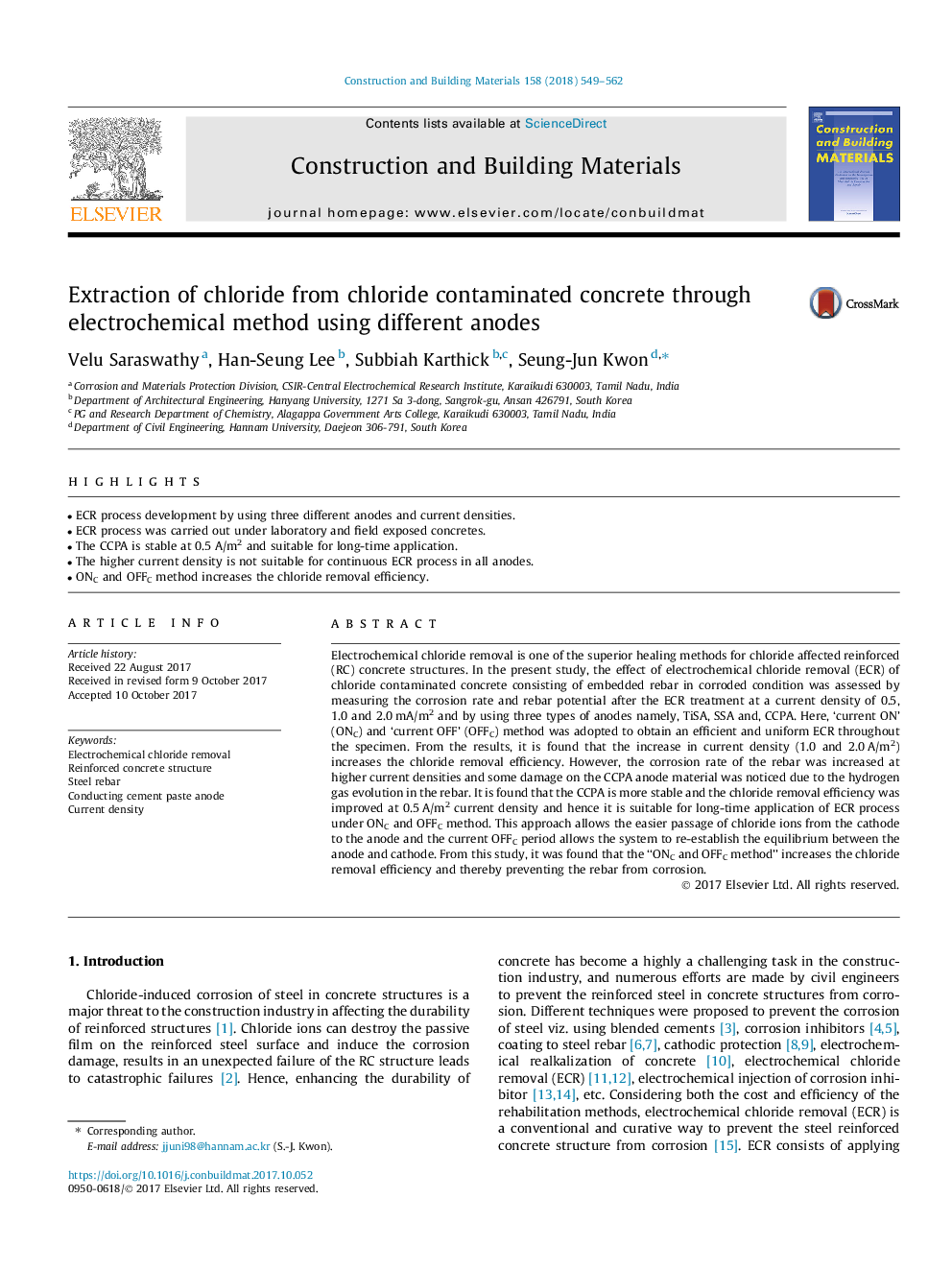| کد مقاله | کد نشریه | سال انتشار | مقاله انگلیسی | نسخه تمام متن |
|---|---|---|---|---|
| 4912623 | 1428748 | 2018 | 14 صفحه PDF | دانلود رایگان |
- ECR process development by using three different anodes and current densities.
- ECR process was carried out under laboratory and field exposed concretes.
- The CCPA is stable at 0.5â¯A/m2 and suitable for long-time application.
- The higher current density is not suitable for continuous ECR process in all anodes.
- ONC and OFFC method increases the chloride removal efficiency.
Electrochemical chloride removal is one of the superior healing methods for chloride affected reinforced (RC) concrete structures. In the present study, the effect of electrochemical chloride removal (ECR) of chloride contaminated concrete consisting of embedded rebar in corroded condition was assessed by measuring the corrosion rate and rebar potential after the ECR treatment at a current density of 0.5, 1.0 and 2.0â¯mA/m2 and by using three types of anodes namely, TiSA, SSA and, CCPA. Here, 'current ON' (ONC) and 'current OFF' (OFFC) method was adopted to obtain an efficient and uniform ECR throughout the specimen. From the results, it is found that the increase in current density (1.0 and 2.0â¯A/m2) increases the chloride removal efficiency. However, the corrosion rate of the rebar was increased at higher current densities and some damage on the CCPA anode material was noticed due to the hydrogen gas evolution in the rebar. It is found that the CCPA is more stable and the chloride removal efficiency was improved at 0.5â¯A/m2 current density and hence it is suitable for long-time application of ECR process under ONC and OFFC method. This approach allows the easier passage of chloride ions from the cathode to the anode and the current OFFC period allows the system to re-establish the equilibrium between the anode and cathode. From this study, it was found that the ''ONC and OFFC method'' increases the chloride removal efficiency and thereby preventing the rebar from corrosion.
Journal: Construction and Building Materials - Volume 158, 15 January 2018, Pages 549-562
